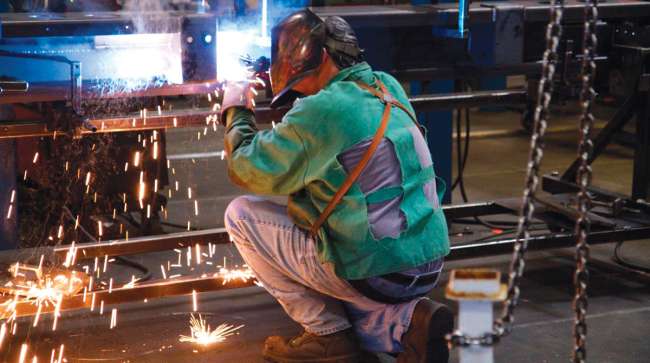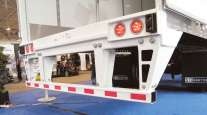Senior Reporter
Trailer Makers Face California Equipment Efficiency Deadline

[Stay on top of transportation news: Get TTNews in your inbox.]
Trailer makers intending to sell their products in California beginning Jan. 1 must certify beforehand that the equipment meets the state’s Phase 2 greenhouse gas rule and receive an executive order, according to the California Air Resources Board.
The Phase 2 standards are intended to make trailers more efficient and lower the greenhouse gas emissions associated with their use. Affected types include box-type trailers such as dry van and refrigerated van trailers of all lengths, flatbed trailers, tank trailers and container chassis, according to CARB.

“It is interesting that the state of California decides to act like they are the federal government. That said, and from my understanding, they will only affect equipment sold in the state and this will have an adverse effect on those dealers and providers selling in California [by adding cost],” said David Giesen, vice president of sales at Stoughton Trailers.
Suggested methods to increase efficiency include aerodynamic and tire devices as well as low-rolling resistance tires.

Willmott
Trailer aerodynamic device providers almost all promote their products as offering huge fuel savings based on wind tunnel or track testing, said Charles Willmott, CEO of WillGo Transportation Consulting.
“California, God love them, is known for aggressive, over-the-top regulation and taxation, etc. That said, their defined process for quantifying the ‘real’ benefits of each aerodynamic device is second to none and largely in conformance with long standing federal guidelines,” Willmott said. “Reality is reality. If they can sort through the device manufacturers’ ‘puffery’ to find reality, then that is a benefit to the whole industry.”
The standards-setting group SAE International has developed its J1321-Type II test to determine fuel consumption, and some manufacturers cite it in marketing materials.

In our second episode of RoadSigns, Season Three, we ask: How Much More Juice Can Be Squeezed Out of the Aerodynamics Lemon? Hear a snippet from host Seth Clevenger, above, and get the full program by going to RoadSigns.TTNews.com.
In 2016, the U.S. Environmental Protection Agency and the National Highway Traffic Safety Administration adopted the second phase of the GHG and fuel-efficiency standards for heavy-duty trucks. The federal Phase 2 standards build upon the federal heavy-duty GHG Phase 1 standards.
In February 2018, CARB largely harmonized with federal Phase 2 standards.
“Even if you don’t agree with states’ rights on intrastate commerce issues, I still think that the California initiatives on trailer aerodynamics are pushing us to be our ‘better selves’ with cost, but no downside,” Willmott added.
The portion of the federal Phase 2 rule affecting trailers is on hold after the Truck Trailer Manufacturers Association challenged the rule, a court-ordered stay ensued and EPA, in a written statement Aug. 17, 2018, said it would review the trailer mandate. EPA has not completed that process.
EPA did not immediately respond for a request for an update on the status of its review.
CARB has posted a list of preliminary approved aerodynamic devices. They can be found on the web page of its Tractor-Trailer Greenhouse Gas Interim Aero Device Approval Program.




